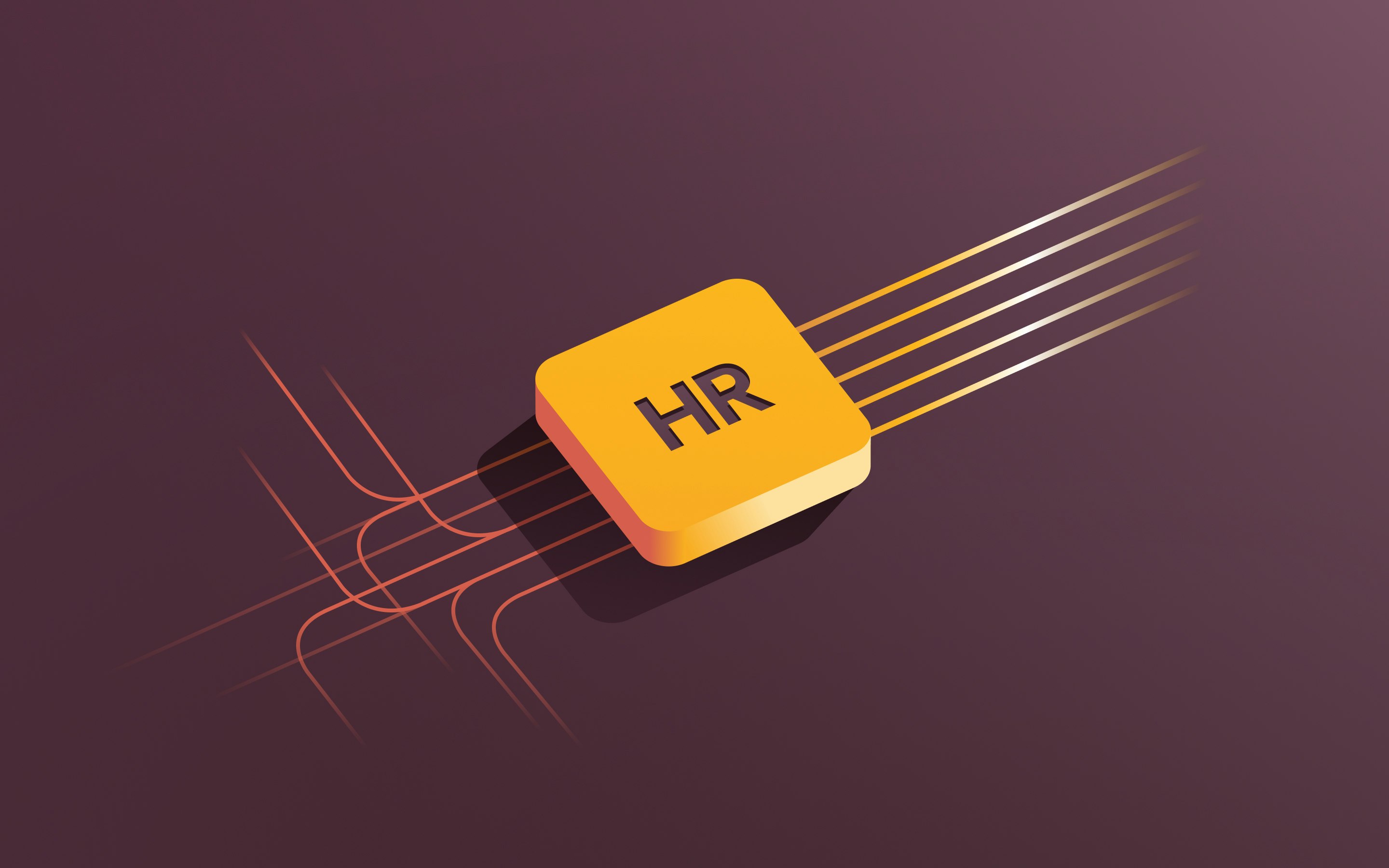The 8 best ADP alternatives for HR and payroll software

ADP is a legacy software company that provides HR and payroll solutions to more than one million businesses. But in the decades since ADP’s founding, countless competing solutions entered the fray—all with the goal of easing administrative burdens, reducing manual errors, and mitigating compliance risks.
How exactly do the preeminent ADP alternatives stack up? And how should resource-strapped companies go about picking the best solution for their needs? Read on for what you need to know.
What is ADP payroll software?
ADP’s software allows businesses to save time running payroll by calculating and deducting tax withholdings and paying employees via direct deposit. The solution also helps workforces monitor compliance with federal, state, and local tax laws and allows payroll administrators to make pay runs via phone, web, or mobile app.
ADP has separate solutions for small businesses with one to 49 employees and businesses with 50 employees or more. The platform also offers different types of payroll services across different pricing tiers. An “Enhanced Payroll” option, for instance, offers garnishment services and unemployment insurance management in addition to payroll, tax, and compliance support. In addition to payroll, ADP offers a number of HR services like time and attendance tracking, background checks, onboarding, and benefits administration.
ADP limitations
While ADP is an established payroll provider that can save companies time and reduce manual errors, HR teams may hit roadblocks customizing the solution to fit all of their needs.
For one, ADP requires different platforms for companies of different sizes. Companies with less than 50 employees use ADP Run, but if you scale, you’ll have to reimplement systems and join its Workforce Now product.
Since ADP added many of its HR capabilities through third party acquisitions, customers get an inconsistent interface across different modules and report a less intuitive user experience than some of the platform’s competitors. And since many of ADP’s solutions aren’t natively built, they’re siloed from one another, meaning users can’t build custom workflows across the different modules to automate tasks based on employee events like promotions.
ADP also has limited customer support features and, according to review sites like G2 and Capterra, has lower customer satisfaction scores than other HR and payroll providers.
8 ADP alternatives & competitors
If you’re not sold on outsourcing payroll and HR functions with ADP, which other providers should you consider? Use the list below to assess the best available alternatives.
1. Rippling
Rippling is an all-in-one platform that unifies HR, IT, and finance data and workflows in a single system, paving the way for time-saving automations that help businesses manage their workforce. Among its many offerings is a full-service payroll solution that lets companies quickly pay employees and contractors across the US and globe with natively-built software.
Rippling calculates and files your payroll taxes with the right federal, state, and local agencies with a 100% error-free guarantee every pay run. It also offers 600+ integrations, automatic and accurate tax registration and filing, and a dedicated mobile app where your employees can view their W-2s and paystubs, submit expenses directly, and more.
As the top-rated HCM, Rippling also offers a full suite of HR solutions—including (but not limited to) an HRIS, time and attendance, benefits administration, and performance management. And since every Rippling product is built with employee data as its single source of truth, the all-in-one platform can connect all your workforce management processes and rid the need of cumbersome and error-prone data entry.
For instance, Rippling can automatically adjust payroll when employees get promoted, or even when they move states and become subject to different payroll taxes. You can also ensure time and attendance data syncs with payroll to ensure employees get accurately paid for every hour worked, factoring in leave, overtime, and any relevant employment laws.
HR features:
- Headcount planning with compensation bands
- Time and attendance tracking
- Recruiting
- Performance management
- Benefits administration—including medical, dental, vision, FSA & HSA, 401(k), and more
Payroll capabilities:
- Global Payroll with automated compliance guardrails
- Pay employees and contractors in the same pay run
- Run unlimited off-cycle pay runs at no extra cost
- Add recurring reimbursements (like cell phone payments, gym memberships, etc.) that are automatically paid out every pay period, monthly, or at whatever interval you choose
- Automatically calculate prorated pay runs for new or promoted employees
- Manage all currency conversions, including payroll adjustments
- Automatically calculate overtime for every country
Limitations:
- Per-employee pricing can add up as you expand your feature set and grow your workforce.
- Potential learning curve as users explore all the platform’s capabilities.
2. Gusto
Gusto offers payroll and HR solutions geared toward startups and small businesses. The platform allows companies to easily process payroll for both salaried and hourly employees. It also has an automated feature that lets users schedule pay runs for predetermined dates.
In addition to payroll, Gusto has HR features including benefits administration that allow small businesses to customize plans, hiring and onboarding workflows, and performance review capabilities. While Gusto can be a helpful, easy-to-use choice for smaller companies who need simple payroll processing, it’s less likely to support larger businesses or startups looking to quickly scale.
HR features:
- Benefits administration—including health plans and 401(k)s
- Hiring and onboarding workflows
- Talent management
Payroll capabilities:
- Automated payroll tax filing
- Integrations with benefits and time tracking
- Unlimited pay runs
- Set up automatic pay runs on specified dates
Limitations:
- Fewer integrations with third party apps (compared to some competitors)
- Difficulty supporting growth-minded startups and transitioning them to larger, more complicated benefits plans
- Nonextensive reporting capabilities
3. TriNet
TriNet (formerly Zenefits), offers HR and payroll solutions to small and mid-sized businesses. Companies can use TriNet to run payroll, benefits, and other HR functions in-house or offload administrative duties to a PEO. The platform allows businesses to consult with HR experts, outsource tedious and error-prone payroll calculations and filings, and protect against compliance risks.
HR features:
- Benefits administration
- Compliance risk mitigation
- Contractor and global workforce services
- Access to expert HR support team members on demand
Payroll capabilities:
- W-2 filing
- Federal, state, and local payroll tax withholding
- Self-service portal for employees to view pay stubs
- Integrations with time and attendance tracking and expense management
- A mobile app that handles time off requests and approvals
Limitations:
- Companies who scale and want to transition off TriNet’s PEO may get slowed down by an inefficient replacement process
- TriNet HR only includes payroll in its most expensive tier—otherwise, it's a paid add-on for an extra monthly fee
- Lower customer support and satisfaction scores compared to competitors
4. BambooHR
More than 33,000 companies use BambooHR for payroll and HR functions including time tracking, benefits, hiring and onboarding, and reporting. The multi-use platform helps businesses manage employee data, find and onboard talent, review performance, and more. BambooHR’s payroll solution allows teams to cut back on double data entry and manual approval processes.
HR features:
- Performance management
- Hiring and onboarding
- Reporting and analytics
- Employee database
Payroll capabilities:
- Sync with time-tracking, paid time off, and benefits processes
- Federal, state, and local tax filings and calculations
- Reporting dashboard to look at payroll summaries per employee, gauge deductions, and more
- Admins can edit withholdings and direct deposit information via web or mobile app
Limitations:
- Doesn’t offer global payroll
- No learning management or headcount planning features
- Fewer compliance monitoring capabilities than other solutions
5. Paycor
Paycor is an HCM and payroll provider that helps businesses save time on administrative tasks while staying compliant with employment and tax laws. The provider primarily works with small and mid-sized businesses and offers a slate of packages across different pricing tiers. Payroll features include automated pay runs, reporting tools, and tax compliance support.
HR features:
- Surveys
- Talent management
- Compensation planning
- Benefits administration
- Compliance support
Payroll capabilities:
- Option for employees to choose pay schedule
- Tax filing
- Automatic pay runs
- Employee self-service to access pay stubs, W-2s, and other documents
Limitations:
- Larger businesses or startups with growth plans may benefit from a more robust HRIS
- Fewer advanced workflow features and customization capabilities than competitors
- Some customers report customer support delays
6. Paylocity
Paylocity helps businesses of all sizes simplify payroll and handle multiple HR functions—from benefits to time-tracking and performance management—in the same place. The provider offers a customizable payroll setup where companies can adjust time off accruals and reporting to meet their business needs, along with a simple four-step payroll process that helps employers deduct applicable taxes.
HR features:
- Talent management across the employee lifecycle
- Benefits administration
- Document storage and employee self-service
- Monitor compliance from a dashboard and take interactive courses
Payroll capabilities:
- Time and attendance, 401(k) vendor, and benefits integrations
- Accuracy checks before pay runs process
- Pay domestic and global employees in the same place
- Map payroll to your general ledger
Limitations:
- Fewer automations across HR modules than competitors
- Fewer advanced reporting capabilities than competitors
- No live video calls with screen sharing for customer support
7. Paycom
Paycom builds payroll software designed to reduce compensation errors and help teams cut down on manual work. The company also offers HR tools like benefits administration, talent management, and a global HCM. In addition to helping pay employees accurately and on-time, Paycom also has expense management and garnishment features linked to payroll.
HR features:
- Onboarding
- Performance management
- Compensation budgeting
- Benefits administration
- Time and attendance tracking
Payroll capabilities:
- Option to pay employees daily
- Employee self-service tools to fix payroll before it processes
- Compliant tax filings handles by experts
- 401(k) reporting
Limitations:
- Lacks of out-of-the-box integrations
- Limited reporting
- Fewer automated workflows than competitors
8. Workday
Founded in 2005, Workday provides HR, payroll, and enterprise resource planning (ERP) services to businesses across industries. The platform offers local and global payroll capabilities that include continuous payment processing, dynamic general ledger mapping, and reporting tools. Workday also has an HCM that uses AI to streamline HR tasks and help employers both attract and retain talent.
HR features:
- Talent management
- Workforce planning
- Benefits management
- Compensation review
Payroll capabilities:
- Flexible auditing
- Manage compliance with tax and employment laws from a dedicated dashboard
- Reporting and analytics tools
- Automatic tax updates
Limitations:
- Solutions are not natively built which can impact the user experience,
- Long implementation times
- Many workforce changes (like modifying an employee profile or an offboarding workflow) require administrative support from third parties or a dedicated internal team
How to choose an HR and payroll software
With no shortage of options, how should businesses go about choosing an HR payroll software best-suited for their needs? Below are the three biggest considerations.
Number and type of employees
Consider your headcount—both now and in the future if you plan to scale, since different solutions are designed for specific business sizes. A payroll service geared towards enterprise companies, for instance, may come with more features (and a bigger price tag) than necessary if you’re an eight person startup.
But if you’re planning on scaling in the coming years, choose a payroll provider that can support you as you aim to hit your growth goals, instead of going through the tedious switch when your needs change.
In a similar vein, you should consider the different categories of workers that make up your org chart. While some solutions specialize in dealing with full-time salaried employees, others can support hourly workers, part-time team members, and fixed-term contractors. Look for solutions that let you pay every worker class in as few steps as possible—while letting you manage everyone who makes up your workforce within the same system.
Frequency and method of payroll
Consider how often you plan on processing payroll. While some providers require companies to submit payroll weeks ahead of time, others offer more flexibility. You should also look out for solutions that allow for off-cycle pay runs, the ability to quickly make corrections if employees ever mislog hours, and functionality with different types of payment—including expense reimbursements, commissions, bonuses, and more.
Geographic distribution of employees
If your workforce is spread across different cities, states, or countries, you need to account for the complexities of federal, state, and local payroll tax regulations across every unique jurisdiction.
You also need software that’s compliant everywhere you plan to hire. While not every US-based payroll provider works internationally, many let you pay employees and contractors in local currency. See where different HR and payroll providers operate, and check whether that jibes with your geographic makeup. Bonus points for solutions that can automatically update payroll information if an employee moves.
Rippling: The best HR and payroll software alternative
If you want payroll so powerful it runs itself, you want Rippling's payroll software.
Rippling offers full-service payroll built on top of a single source of truth for employee data. That means your workforce information isn’t tied to one specific app—it’s the same across payroll, time and attendance, onboarding, performance management, and any other apps you use within our unified platform.
What does that mean for you and your team? For starters, you have a single source of truth for up-to-the-minute employee information. It also means that your team doesn’t have to reenter information across systems when an employee gets promoted or moves to a different city to work remotely. From changing security permissions to updating PTO policies, Rippling triggers automatic updates to employee information in a single flow. This is especially beneficial for small businesses. It allows you to do more with less—less money, less headcount, and less time. And all with a 100% error-free guarantee.
This blog is based on information available to Rippling as of August 26, 2024.
Disclaimer: Rippling and its affiliates do not provide tax, accounting, or legal advice. This material has been prepared for informational purposes only, and is not intended to provide or be relied on for tax, accounting, or legal advice. You should consult your own tax, accounting, and legal advisors before engaging in any related activities or transactions.











